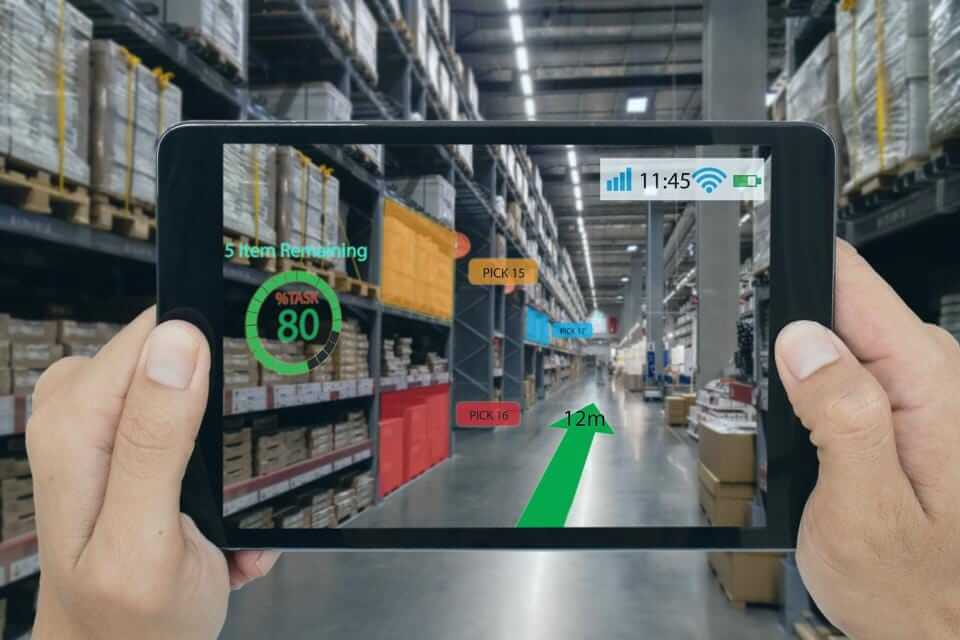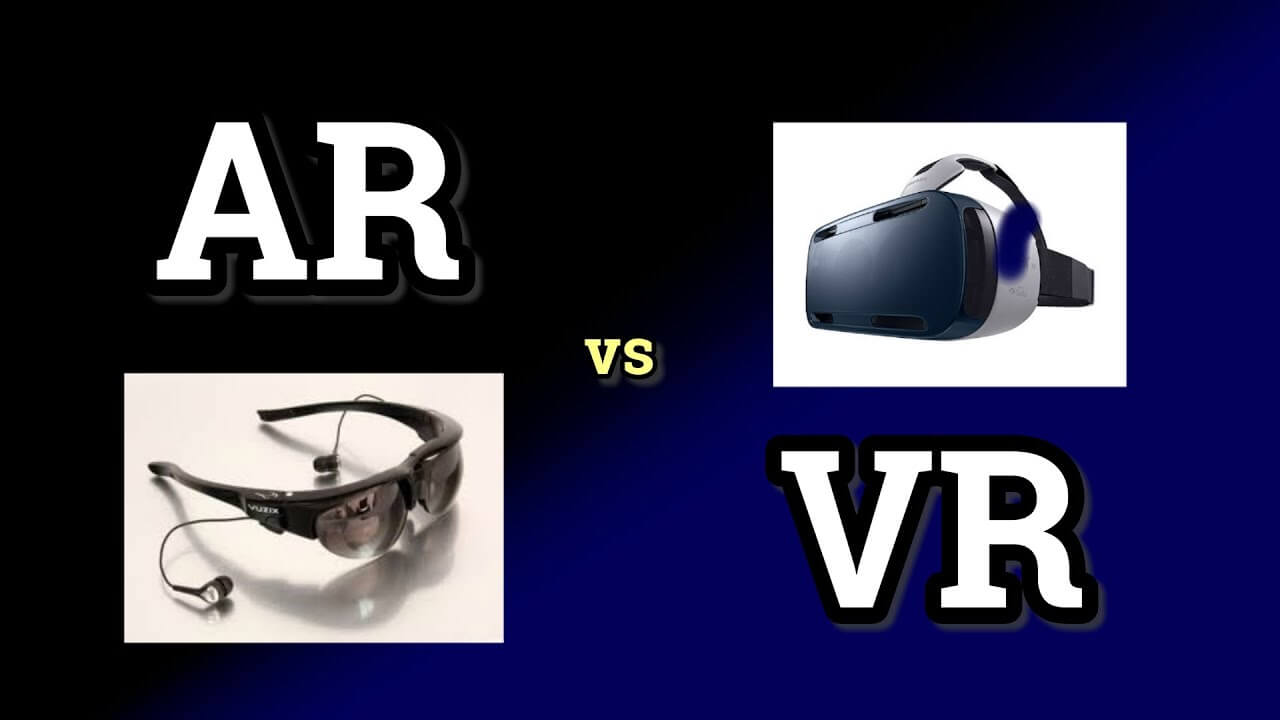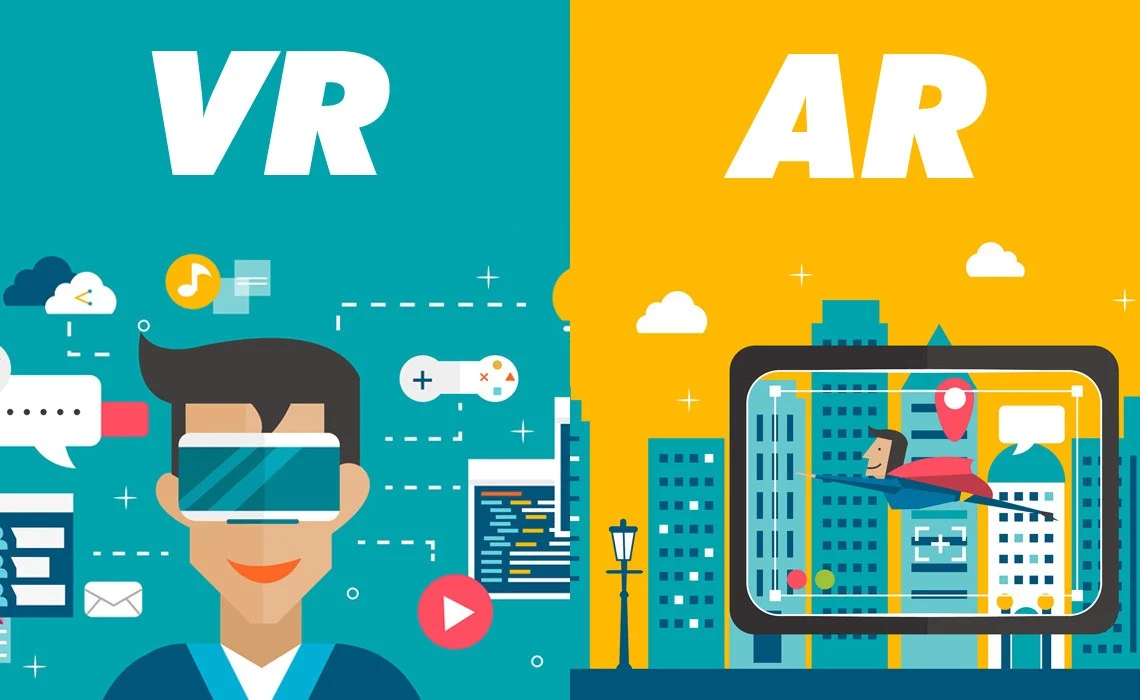What’s the Difference Between AR and VR?
One of the most important fields of technology in recent years has been the Extended Reality (XR) industry. This industry itself includes two main subcategories called Augmented Reality and Virtual Reality. In short, these two technologies are trying to bring the virtual world into everyday and real life through their devices and software. But what is the difference between virtual reality and augmented reality?
In this article, we will answer this question by reviewing the nature, applications, advantages and disadvantages of each of the mentioned technologies. In whatever industry and field you are active in, you will definitely deal with XR-related technologies in the future. So join us and get to know the two main actors.
What is Augmented Reality?

The first step in understanding the difference between virtual reality and augmented reality is to define them. Augmented reality or AR is a technology that combines elements of the digital world with the real world. Laptop, tablet and mobile phone cameras and smart glasses are among the main and most well-known tools used in augmented reality. For this purpose, they mount or combine virtual elements and information on real-world objects using patterns that calculate position and direction.
The added value of AR is that it is not limited to displaying digital elements in the real world; It also provides the possibility of integration and more sensory communication. Navigational software, computing programs, education, financial audits and healthcare are among the most important applications of Augmented Reality.
The difference between virtual reality and augmented reality is also evident in their goals. Based on this, augmented reality aims to expand the experience and understanding of being in the real world by providing digital information about it to the user. This information is displayed in formats such as image, text, sound, video, etc., on the screen of the phone, augmented reality glasses, etc.
Examples of concrete applications of augmented reality are:
- Snapchat filters
- Interior decoration programs such as 3D Max
- Photography and photo editing software
- Medical and healthcare applications
- Google Street View
- Google Glass
- Positioning virtual objects and characters in the real world in games like Pokemon Go
- Production of digital content and special effects such as fading on videos
- Translation in smart tools
What are the Benefits of Augmented Reality?

It will be easier to understand the difference between virtual reality and augmented reality by reviewing the benefits of each. Among the most important advantages of Augmented Reality are the following:
- Providing advanced, detailed and deep real-world experience
- Easy to use and universal access
- Helping manufacturers in product design and predicting its appearance characteristics
- Making education more interesting and also the possibility of sharing AR experiences remotely
- Facilitating medical and surgical training
Limitations of augmented reality
Like any other emerging technology, augmented reality software is still evolving and has limitations. The most important challenges of this technology currently are:
- Relatively high implementation costs for developers
- Performance limitations on many digital devices
- Low privacy
- Difficulty working simultaneously with equipment such as glasses, etc
- The addiction of constantly working with smart devices and the need to constantly update programs
What is virtual reality?

The next step to understand the difference between virtual reality and augmented reality is to define virtual reality. Virtual Reality or VR not only combines the virtual world with the real world; It replaces. In fact, the software and hardware of this technology provide complete immersion in the virtual world. Using VR, users enter a simulated environment from the real world with added features and can perform many of their daily activities in a virtual form.
VR has revolutionized the gaming and entertainment industries, education, medicine, and remote work organizations. Today we can see the emergence and flourishing of this technology in Metaverse more than anywhere else. A world where users can engage in various activities such as buying and selling, education, construction, music, etc. and even earn money in this way. Metaverse games have also combined old video games with a more realistic and highly immersive user experience. These games are also called virtual reality games.
One of the differences between virtual reality and augmented reality is the hardware to access them. Until a few years ago, in order to use VR, we needed special consoles for this technology in addition to glasses, headsets and mobile phones. But today, it is more directly accessible like AR with wireless headsets and mobile devices and laptops. VR equipment is developed to establish a better sensory relationship with the virtual world. For this purpose, they blame the user’s body movements.
What are the Benefits of virtual reality?

As we said, the most important difference between virtual reality and augmented reality is the degree of immersion of the user in the virtual world in each of them. This fundamental difference has led to the formation of certain advantages for virtual reality, the most important of which are:
- The possibility of creating a more comprehensive interactive environment
- The possibility of further development of technologies such as Web 3
- Reducing the possibility of privacy violations
- The possibility of using new teaching methods using virtual reality in education
- The possibility of virtual travel to places or times that are never accessible to humans.
- A more engaging user experience in branding, advertising and marketing
What are the disadvantages of virtual reality?
Among the most important limitations of VR at the time of writing this article, the following can be mentioned:
- Relatively high operating costs
- Limitation to pre-recorded environments
- Technological complexity of learning and setting up
- Possible negative effects on the human mind and body, in case of continuous and uncontrolled use
What is the difference between augmented reality and virtual reality?
You must have noticed by now what are the main differences between virtual reality and augmented reality? The main and central technologies of virtual and augmented reality are the same. For example, both use artificial intelligence and brain-based learning to improve their performance. The goal of both is to provide a three-dimensional and computer-simulated experience to the user; But each achieves this goal in a different way. In this section, we compare these two technologies in different criteria.
The difference between VR and AR equipment

Accessing augmented reality and using it only requires smart mobile devices, tablets or laptops, software, equipment such as glasses, etc. These devices can provide a complete user experience of AR. But in many cases, to have an immersive and complete experience of virtual reality, it requires special console devices or at least VR headsets in addition to AR equipment. A fact that definitely increases user costs.
In both virtual and augmented reality technologies, the more equipment you have, the more complete the experience. Gloves, sensory sensors attached to the body, microphones, etc. are among these equipments. Also keep in mind that the AR user needs more bandwidth than the VR user.
The Difference between AR and VR environment
Virtual reality users live in a completely imaginary and predefined world. They have little contact with reality and can only have a simulated experience of it. However, AR users can get a simultaneous experience of reality and virtual world. For example, in the game Pokemon Go, which we mentioned before as one of the applications of augmented reality, the gamer sees creatures in front of him in virtual form, whose equivalents are in front of him in the real world.
In short, augmented reality is less immersive but more realistic than VR. It is estimated that AR and VR environments are 25% and 75% virtual respectively. The remaining 25% in VR includes the user himself and the sensory experiences of his body.
The difference between AR and VR Applications
The differences between virtual reality and augmented reality are significant in their applications. Virtual reality still does not remove the user’s environment from interacting with the virtual world, for this reason, it is mostly used as an auxiliary tool in many industries. For example, in the education industry, AR is used more in face-to-face classes than in virtual classes. But VR allows 100% virtualization of distance education with extraordinary experiences that cannot be obtained in the real world or AR.
In summary, VR has fewer spatial and temporal constraints than AR, but AR’s computational capabilities are greater. For this reason, the first and most widespread use of VR is in video games.
Face the future world with AR and VR
AR and VR technologies have joined hands and created one of the biggest industries in the world at the time of writing this content, which is the end of April 2023. The total revenue of the XR industry is projected to reach $50.9 billion by the end of 2026, from $13.8 billion at the end of 2022.
Regardless of the differences between virtual reality and augmented reality, both technologies will have their own place in the future of the planet and modern man. Even now, these two industries are used in a wide range of fields from smartphones, to metaverse, medicine, education, automotive and even sports and art. The development of disease diagnosis methods, the improvement of the quality of surgery, the development of the face-to-face and internet retail industry, the production of automatic cars and completely virtual education are only a part of the effects of the XR industry on human life in the future.











